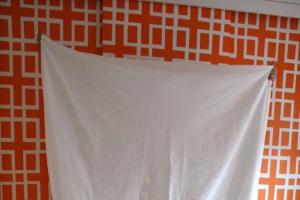The ceiling plinth not only performs a decorative function, visually separating the walls from the ceiling, but can also hide the joints of various finishing materials ceiling and walls. Not every interior design involves the use of ceiling plinths, but most often general form the room seems incomplete without it. There is nothing complicated in attaching this element - fillets - almost all types of skirting boards are attached with glue. But the question of how to properly trim ceiling plinths in the corners of rooms can confuse many. After all, even in the very simple room There are internal corners where the ceiling plinth strips must be joined precisely and beautifully. And in a more complex room configuration, you will also have to join the plinths, performing external corner. In this article we will look at various options, how to cut a ceiling plinth using available tools and without them.
First, you need to figure out the question of how to cut the ceiling plinth; the answer to it depends on the material from which the fillet is made. On this moment We sell ceiling plinths made of polyvinyl chloride (PVC), expanded polystyrene (foam), polyurethane and wood.
PVC ceiling skirting boards are the cheapest. They easily form dents and creases that cannot be removed, so the product has to be thrown away. Also, their disadvantage is electrostaticity - the ability to attract dust. You can cut them with a sharp construction knife or hacksaw.
Ceiling plinths made of polystyrene foam are also considered cheap. This material is very fragile and easily crumbles during processing, so it is necessary to cut polystyrene foam with a sharp knife or a hacksaw, without applying too much pressure.

Ceiling plinths made of extruded polystyrene foam A little more expensive than polystyrene foam, they are denser and more difficult to cut. However, they crumble less, so they are easier and more convenient to work with. Cut with a construction knife and a hacksaw for metal.
Ceiling plinths made of polyurethane are the most expensive at the moment. They are durable, elastic and moisture-resistant, easy to cut with a construction knife and do not crumble. The disadvantage of polyurethane skirting boards is their dependence on temperature changes. For example, over gas stove the polyurethane baseboard will acquire residual deformation and begin to crack slightly. If you try to process or cut such a skirting board, it may bend or deform in other ways.
Wooden ceiling plinths They are dense, heavy products that can only be cut with a hacksaw, preferably with small, frequent teeth. You can also use a metal blade.

Before moving on to listing the ways to correctly cut a ceiling plinth, I would like to note that it is possible not to cut the plinth with particular precision. Available for sale special corner elements, into which the edges of the plinth are inserted. In this case, it is enough to cut the plinth strip at an angle of 90 °, and the corner element will hide all the flaws. But this method is not always used, since the dimensions of the corner elements are slightly larger than the baseboards themselves, so the corners in the room will stand out against the general background. Sometimes it can look clumsy. However, if the design of the room allows the use of corner elements for ceiling plinths, it makes sense to use them. Further instructions will be useful to those who still decide to precisely cut the skirting boards at a given angle.

A miter box is a simple carpentry tool that allows you to cut the workpiece at the required angle. Most often it is a tray made of plastic, wood or metal with vertical slots for cutting at an angle of 90° and 45°. There are also more complex designs miter box - for cutting at angles of 90, 60 and 45 degrees. For more professional work a miter box with rotating mechanism, where the hacksaw can be fixed at any angle to the workpiece.

How to cut ceiling plinth using a miter box - inner corner:
- We apply the plinth to the ceiling and measure the required length.
- Then we install the plinth strip in the miter box so that the position coincides with the position of the plinth on the ceiling.
- The plinth strip should be pressed against the far wall of the miter box.
- We hold the plinth with our left hand.
- We choose the position of the hacksaw when the angle is 45 degrees and at the same time the handle of the hacksaw is as close as possible to the left hand.
- We cut the workpiece without putting excessive pressure on the saw.
- The next step is cutting the baseboard striker. We also install it to the far wall of the miter box.
- Press and hold with your right hand.
- We choose a position for the hacksaw when the angle is 45 degrees and the handle of the hacksaw approaches the right hand.
- Cut off the baseboard.

Next, we join the cut plinth strips and check the cutting accuracy. For more precise orientation, they also say that to perform internal corner It is necessary to start cutting from the front part of the baseboard. After cutting, wooden skirting boards will most likely have to be adjusted with a file.
How to cut a ceiling plinth using a miter box - outer corner:
- In order not to make a mistake with the dimensions, it is better to start by marking the inner corner, and then cut out the outer corner. Otherwise, there may be a situation where the bar may not be long enough.
- It is necessary to attach the plank to the ceiling and outline the dimensions.
- We install the ceiling plinth strip and press it against the nearest wall.
- We hold with our left hand and select a position for the hacksaw at an angle of 45 degrees, when the handle approaches the left hand.
- We cut off the workpiece.
- We install the counter plate to the nearest wall and hold it with our right hand.
- We install the hacksaw at an angle of 45 degrees, when the handle approaches the right hand.
- We cut off the workpiece and join the corner.
Trimming the workpiece using a miter box is only suitable if the angle between the walls is even - 90 degrees. If the accuracy leaves much to be desired, you will have to use other methods.
How to cut the corner of a ceiling plinth using markings on the ceiling
Marking the plinth on the ceiling also allows you to cut the corner smoothly and accurately. The only drawback of this method is that it is difficult and inconvenient to hold the plinth strip suspended during the cutting process. Otherwise, you can mark the angle for cutting in this way even more accurately than in other ways. When applying the plinth to the installation site, all flaws in the walls and deviations in the size of the angle are immediately taken into account.
Cutting the corner of the ceiling plinth:
- First of all, two blanks need to be cut at an angle of 90 degrees.

- Then we first apply one plank, resting its end against a perpendicular wall. We draw a line on the ceiling outlining the contour of the plinth.

- We remove this plank and attach a counter plank, also resting its end against the wall. We draw a line.

- The intersection point of the outlined lines will be the mark at which it is necessary to cut the baseboard.
- Again we apply each strip one by one and mark the cutting point on them.
- Draw a line from this point to the other edge of the plinth.

We cut the skirting boards along the marked lines, join them and apply them to the installation site. Please note that using this method it is more convenient to cut internal corners.

Something resembling a miter box can be made by applying the required cutting angles to paper, cardboard or wood. You need to draw two parallel lines, determine the center, and then mark the necessary angles using a protractor. The advantage of this method is that you can set any angle, including more than 90 degrees. Of course, before cutting the corners of the ceiling plinth, you must first check the angle between the walls using a corner and measure it with a protractor.
The technique for cutting a ceiling plinth using a painted miter box is exactly the same as using the miter box itself. Press the plinth strip against one of the parallel lines, then place the hacksaw under the right angle, which is already outlined, and cut it off.
Makeshift miter box tray with your own hands
Making a miter box with your own hands is also not difficult.
Method 1. You will need three wooden planks or boards, which must be knocked together into a U-shaped box. Then the necessary angles are marked on the walls of the box, and the cut is made with a hacksaw. The result should be a wooden miter box with grooves cut out in it.

Method 2. A combination of a makeshift miter box and a template with outlined lines. For ease of cutting, it is necessary to build something that will conveniently hold the ceiling plinth strip, since it is difficult to hold it suspended. It is enough to put together a corner from two wooden planks or boards. On paper you need to draw lines with angles for cutting at 45 degrees or any other. Then we apply the plinth blank to the corner, press it with our hand, as described in the technology for using a miter box, move the paper with the template under the edge where we are going to make the cut, and cut it off. During the cutting process, we focus on the line drawn on the paper.

Method 3. You can use anything as an improvised miter box, anything that forms a corner. For example, a table pushed against the wall.

Important! Please note the rule for taking measurements for cutting ceiling plinths. To mark an internal corner, you need to measure the length directly from the corner itself. To mark the outer corner, you need to be aware that the baseboard will protrude into the room at a distance equal to its width.
You should not fix the ceiling plinth strips before you have cut the counter strip and tried out their location. Only after the two strikers meet perfectly in the corner can you begin to attach them to the ceiling. Small flaws can be corrected with a file or nail file in the case of wooden and polyurethane skirting boards. To adjust the foam products, you will have to use a sharp knife.
If suddenly, even after adjusting the baseboards, a small gap remains between them, do not despair, it can be repaired with putty. Cutting the ceiling plinth yourself is not difficult. But in order not to spoil a lot of products, it is better to first practice on small pieces.
The quality of the ceiling finish greatly influences appearance premises. That’s why they try to do everything perfectly, or very close to it. The finishing touch to the design is the ceiling plinth. They give the finish a finished and holistic look. The planks themselves smooth surfaces easy to install: using special glue white, but problems arise with the design of corners. Without knowing how to make the corner of a ceiling plinth correctly, a lot of material is spoiled. We’ll tell you how and with what to cut it in the corners.
What is it made of and what is it called?
The very first plinths on the ceiling were made of plaster. They were cast in special molds, then installed on the ceiling using mortar. Such figured decorations were called fillets. Today you can rarely see them: they are expensive, but in appearance they are almost no different from cheaper options. And this name is almost lost.
The most popular ceiling plinths today are made of polyurethane or polystyrene. They are inexpensive, look great, are easy to install, and have a wide range of profiles and patterns. The width can be from 5 mm to 250 mm. They are used in almost any room, decorated in any style. Exception - Wooden products are most often used here - style dictates its own conditions.
There is also a similar plastic finish. It is mainly installed in bathrooms. But even in damp rooms you can safely install polyurethane strips - they are not afraid of dampness.
You need to cut ceiling plinths in corners from any material using one of the methods described below. The only exception is plastic skirting boards: You can create such a corner only using ready-made corners.
What and how to cut
Working with skirting boards from different materials implies the use different instruments for cutting. When working with wooden ceiling plinths, it is more convenient to use a wood saw. All others, including plastic, foam and other polymers, are better cut with a metal blade. This results in a smoother cut and less burr. Saws are usually used when working with a miter box.

When working with foam baseboards without special tools, cut them with a good stationery knife. Its blade is quite thin and even, the cut is smooth and not wrinkled. If you work with polyurethane or polystyrene with a saw, do not press hard: you can dent it.
In general, to get a little used to the tool and material, take a piece and practice on it: cutting, sawing, trimming. This way there will be fewer problems during work.
How to get the right angle
The most problems when working with ceiling skirting boards arise when decorating the corners. Since the surface of the products is complex, simply cutting at the desired angle will not work: it is also necessary to trim so that they fit together and, preferably, without large gaps. In fact, there are several ways to make the corner of the ceiling plinth ideal (or almost).
Using a miter box
If the corners and walls in the room are smooth, you can use a special carpentry tool- miter box. This is a gutter in the shape of an inverted letter “P”, in which lines are marked for cutting at an angle of 90° and 45°. The part to be cut is placed inside, and a saw is inserted into the guides. The part is held in place and cut at the required angle.

In the case of baseboards, not everything is so simple: they must simultaneously adhere to two surfaces, so they need to be pressed against one or the other wall of the miter box. When working with ceiling ones, they are pressed against the side closest to you.
The sequence of actions when finishing the outer corner is to make a cut at an angle of 45 degrees. Place the miter box in front of you. You try on how the plinth will be positioned, determining which part of it will be attached to the ceiling. In order not to get confused and to cut the ceiling plinth correctly, place the plank that will be located on the right on the right, and the one on the left on the left.

Press the part that ends up on the ceiling to the bottom of the miter box. The second side is closer to you and raised. You rest it on the wall of the device so that it does not wobble when cutting. That is, the front part of the plinth turns away from you. Make the cutting direction as shown in the photo below. By putting the two cut pieces together, you get a protruding corner - an outer or outer corner.

How to make an outer corner of a ceiling plinth using a chair
First place the sawn parts in place “dry”, without applying glue. If the geometry of the corner turns out to be not so ideal, you can correct it a little with a knife. It is easier to cover up small errors with special putty.
The situation with the inner corner of the ceiling plinth is very similar. First, try on which side will be on the ceiling, press this part to the bottom of the miter box, rest the second part on the wall closest to you and make cuts as shown in the photo below.

And again, first try it on without applying glue, and if necessary, adjust it slightly. Then apply thin strip glue on both surfaces that will be glued to the wall or ceiling.
Your version of how to use a miter box correctly is shown in the video.
How to make a corner of a ceiling plinth without a miter box
Few apartments or houses have angles exactly 90°. Small deviations can be easily corrected after trying on. But not always. Then you have to mark everything “in place” - under the ceiling.
You will need a finely outlined pencil (hard - it is not so visible on the ceiling, but leaves fairly clear marks close up), a small piece of plinth, a ruler and a good stationery knife if you are working with polyurethane (polystyrene) baguettes or a metal saw for working with other materials.
Place the plinth against the corner and draw along the outer edge with a pencil. Apply to the other side of the corner and also mark. You have a cross on the ceiling, the center of which marks the place where the ceiling plinth strips should meet (look at the photo). Having placed a piece of plinth in the corner that will be glued there and resting its end against the wall, transfer the mark to it.

How to make corners on ceiling plinths without using special tools
Now take a ruler and connect the edge of the baseboard with the marked mark. If you just put the plinth on the table and cut it along the line, the two parts in the corner still won’t fit together: it will get in the way inner part. It can be trimmed later by trying it on the ceiling. The second way is to install the piece that needs to be cut on the table with the part that will be on the ceiling. And cut along the line, but holding the knife at an angle of about 45°. You will still need to make adjustments, but much less (and less likely to make mistakes).
Repeat the same operation with the second bar. You attach it to the right wall, rest the end against the adjacent wall, mark the place where the cross is drawn, draw a line and then cut it off. Adjustment is carried out “dry” without applying glue.
You repeat exactly the same steps for the outer (protruding) corner. Now you know another way to make a corner of a ceiling plinth, without a chisel or other special devices.
Using decorative corners
There is another, easiest way. For skirting boards made of polyurethane or polystyrene, use ready-made, factory-made decorative corners. They are installed in a corner, and the strips are glued tightly to them. Trimming them if necessary is very simple: a few millimeters with an ordinary stationery knife.

How to join in corners
If the installation of the first corner is completed, you can assume that you have already learned how to do almost everything. “Almost”, because you still need to learn how to connect the corners and cut the planks to length. When some part has already been glued and there is a small distance left to the corner, how can you not make a mistake with the length? The answer is simple: leave a reserve.
At first, you can cut a piece 10-15 cm longer: you will have the opportunity to redo it several times if something doesn’t work out right away. Then you make an angle in the manner described above, try it on dry, adjust everything so that the result suits you. Only after this can you place the already cut strip in the corner and mark the place to which it can be shortened. You need to cut exactly 90°. It is not necessary to use a miter box. Just try to place the knife (hacksaw) perpendicular to the surface.
Small inconsistencies can often arise that spoil the overall appearance of the room. This, of course, can and should be avoided. So, how to cut a plinth straight with your own hands? The first assistant in this matter will be a tool such as miter box. But buying one for one-time repairs is not always advisable. Although, if you decide to help all your relatives and neighbors with repairs, and in the future also earn money from it, then you need this device.
Cutting methods
The product is installed around the perimeter of a rectangular room. Trimmed to finish right angles. Therefore, we will consider how to cut the baseboard into 45 degrees.
Cutting using a miter box

What is a miter box? This is a special tray made of wood, aluminum or plastic with grooves provided to guide the saw at the desired angle.
Here brief instructions on using such carpentry tools:
- Preparation. We take the product and put it in the tray. We align it to the position in which it will be installed on the ceiling.
- Cutting. With the other hand, insert the cutting tool into the groove. It could be a knife or a hacksaw. And we cut it boldly. The device will not allow you to miss the intended place.
You should know: the metal blade is also suitable for cutting foam plastic.
- Treatment. The wooden baseboard may need to be further processed with a file to align the edges of the cut. Plastic or foam can be trimmed with a knife, as long as it is sharp enough.
Tip: when cutting, do not put pressure on the product. The polystyrene foam may crumble, and the wood may even split.

Cutting without a miter box
If you do not have such a device, and you are not going to purchase it for one-time use, then you can use the following methods on how to cut the baseboard at 45 degrees.
- First way- this is to make this simple carpentry tool yourself. To do this, knock down the most ordinary wooden tray. Then we measure the lines of the slots using a protractor or a school square. We cut the grooves and we have a primitive device ready.

- Second way How to cut a plinth at an angle is even simpler. It is especially painless to use in cases where the corners of the room are not even.
We don't need a tray. All you need is two boards bent at 90 degrees and a cardboard stencil with a line drawn for orientation.
- Third way. In this case, we don’t knock anything down at all, but simply use a table placed against the wall or any other similar structure.
We mark future joints directly on the product itself, on the wall and on the ceiling. We place the plinth the way we are going to mount it and cut according to the marks.

Remember: when cutting, keep the tool strictly vertical to obtain a right angle.
Features of cutting various angles
We have discussed the general technology of how to cut ceiling skirting boards. But there are also some nuances when cutting different corners of this product.
Indoor floor

First, let's set the left and right plinths at right angles. We insert the left product into the miter box, applying it to the outside, and cut off the left inner corner. Then we perform a similar operation with the right one. Ready.
External floor

In this case, using a miter box, we set the mode not to the inner, but to the outer edges. Otherwise the operation is similar.
External ceiling

We already cut the ceiling corners into inside devices. Inserting the left plinth into the miter box, cut off the left outer corner. We substitute the right one – the mode is right outer edge.
Internal ceiling

By analogy with the outer corner, we also cut the inner one. Just cut the inner left and right edges respectively.
It is important to remember: the product is always attached to the ceiling upside down. Therefore, insert it upside down into the miter box. This will help you cut the baseboard correctly.
- Install the plinth strip only when you have already prepared the next one. It's better to do this on the floor rather than near the ceiling.
- Patience, patience and more patience. Sometimes joints have to be corrected more than once. Don't be nervous, be careful, and everything will work out.
- By using polystyrene foam and plastic, you can leave small gaps at the corner joints. The putty hides them well. Be careful with the tree.
Results

E" width="450″ height="334″ frameborder="0″ allowfullscreen="allowfullscreen">
This tool is a profile in the form of an inverted letter P. There are slots on the sides for sawing at an angle of 45, 60 and 90 degrees. More complex corner templates or miter boxes have devices for setting different cutting angles.
For an inexperienced master the best option would be to purchase a ready-made miter box at a hardware store. At home, it can be made from three planed boards or plywood.

The tool can be assembled by fastening pre-prepared parts together. The corner template box must be secured using wood glue or screws. Side walls The miter boxes must be strictly parallel to one another. The horizontal beam should create a strict perpendicular to the side beams.
Step 3: we mark slots at different angles to cut laminate, trim, etc.
The application of the slots will affect the accuracy of the work performed in the future. Therefore, this process must be approached with special care. It is advisable to make cuts using the same hacksaw that will be used to perform the work.
Step 4: preparing the material to be cut at an angle of 45 degrees
It is necessary to secure the finished corner template on the desktop using a clamp. Next, markings for the future cut should be applied to the workpiece. Next, you need to align the workpiece with the 45-degree slot inside the miter box and press firmly.

The hacksaw must be inserted into the corresponding grooves of the corner template and cut the workpiece. The grooves will limit the movements of the saw and the cut will be carried out in the desired direction.

Subtleties of working with a miter box and various materials
When sawing elements such as baseboards, it is not always necessary to make a 90-degree cut. After all, the walls in the room may be uneven. Before sawing the baseboard, it is necessary to adjust the angle of the cut.
Thus, the article described and characterized the process of sawing wooden materials using a miter box.
Ceiling plinth is a product that in appearance is no different from its analogue floor coverings. It is also called fillet. This detail serves to mask the joints between the wall and ceiling. It is installed at the very end finishing works, since the element does not carry any functional load, but plays only a decorative role. The process of installing the product is not at all complicated, but many are faced with the dilemma of how to make a corner of the ceiling plinth. Depending on the selected materials and tools that are available, the fillet corners are cut in different ways.
|
The modern construction market offers the following options for these products:
- Polyurethane. They are considered the highest quality and most reliable. In addition, they are moisture resistant and elastic. Among the disadvantages, it is worth noting the high cost and exposure to temperature changes. Because of this feature, the corners of the ceiling plinth are made of of this material may crack if installed from below kitchen stove. It is also important to remember that inaccurate trimming may cause slight deformations, which can ultimately lead to significant curvatures.
- Polystyrene. They are practically no different from the previous material, but they have a lower level of strength and therefore break easily due to mechanical stress. Also, polystyrene products cost a little less.
- Polyvinyl chloride (PVC). This is the cheapest material option. The low cost has left its mark on the quality: the products are difficult to work with and are prone to dents. To make the outer or inner corner of a PVC ceiling plinth, you need a lot of experience and special tools. But the manufacturers of these products do not stand still, and today for these purposes you can purchase special fittings - corners for ceiling plinths, thanks to which installation plastic parts Even a novice home craftsman can do it.
- Wooden. These skirting boards look impressive. Unlike all other products, wooden materials installed with self-tapping screws or nails, not with glue.

The above options can be produced in various sizes, have a textured coating or be completely smooth. Usually the color of the products is white, but if desired, you can find or order any other color.
Creating fillet corners
To connect two planks, you can use decorative corners for ceiling skirting boards. But in the absence of such, the material will have to be processed. Next we will talk about how to correctly cut a corner on a ceiling plinth.
How to use a miter box for processing
A miter box is one of the simplest carpentry tools used to make trimming various products from different angles. It is usually a plastic, metal or wooden tray with several slots in the walls. IN simple version There are slots for 45 and 90 degree angles only. In more complex ones, there are more angles, and a professional tool is equipped with a rotating mechanism that allows you to direct the cutting element at any angle. The principle of operation is simple: before cutting off the corner of the plinth, the workpiece is secured in a tray and then processed cutting tool(knife, saw, etc.), lowering it into the slots.
 Trimming ceiling plinth using a miter box
Trimming ceiling plinth using a miter box How to properly cut the ceiling plinth for the inner corner on a miter box:
- The first step is to attach the plinth to the surface and mark the required length with a pencil.
- Then the part is placed in the tray so that its current position coincides with the position on the surface.
- Using a clamping mechanism, the plinth is fixed to the far wall of the tool container.
- The product is taken with the left hand. After which you need to select correct position cutting element (angle 45 degrees). In this case, the handle of the tool should be as close as possible to the left hand.
- Applying light pressure on the part, begin trimming. It is important not to press the product too hard, otherwise you may deform it.
- The same manipulations, only in mirror image, must be carried out with the second baseboard.
Then the cut strips must be checked for correct processing. To do this, it is enough to connect the ceiling plinth by simply attaching the strips to the surface. If a wooden product is used, it will most likely have to be further processed with a file.
On a note! First of all, it is necessary to design the internal corners on the ceiling plinths, only after that proceed to the external ones. Otherwise, the length of the purchased strips may not be enough.

How to properly cut a ceiling plinth for an outer corner:
- Before cutting the corners, you need to attach the fillet to the edge of the wall so that the product extends slightly beyond the boundaries of the surface, and make a mark.
- Then perform the same operations as in the previous instructions.
- At the end, make a fitting and, if necessary, further process the edges with a stationery knife or file.
Important! To cut the corners of skirting boards using a miter box, you need a perfectly even surface angle of 90 degrees. If there are any unevenness on the walls, due to which there will be deviations of more than 2 degrees, you will have to use other tools.
Processing fillets using markings
Most often, the final alignment results in straight corners. But in some cases, the deviations are so large that even after fitting and filing the fillets, gaps remain. And then the question of how to correctly cut the ceiling plinth using a miter box will be meaningless, since in this situation it is better to cut the planks with preliminary fitting on the spot. To carry out this procedure you will need the following:
- A thin hard pencil or marker (this tool leaves clear lines, so you don’t have to look closely).
- A small fragment of a fillet.
- Ruler or tape measure.
- A special construction or stationery knife for processing polystyrene, polyurethane or PVC baguettes.
- Saw or hacksaw for processing wooden baseboards.
Before cutting the ceiling plinth, you need to lean the strip against the corner and draw a line along the outer edge of the product on the ceiling surface. Then attach the same fillet fragment to the opposite wall and draw the same line.
As a result, there will be an intersection on the ceiling surface, where the cut products will need to be joined. The resulting mark is alternately transferred to the parts that will be joined.

Then you need to take a ruler and connect the edge of the fillet with the markings. After which the product is placed on the table and cut along the line.
This method is quite simple, but it comes with some risks. As a result, the inside of the baseboard can interfere with the connection of the parts on the surface. To prevent this from happening, you can do the following: before cutting the ceiling plinth in the corners, it must be placed on the table in the same position in which it will be glued to the wall. Then cut the outer corner or inner corner at a 45 degree angle. The next plank should be processed in the same way. In this way, lengthy processing after fitting can be avoided.
Next, you need to adjust the joint, but already at the place where the fillet is installed. That is, before gluing the ceiling plinth in the corners, it is necessary to check the internal joint without applying adhesive or fasteners. Then carry out the same manipulations for the outer corner planks. After preliminary fitting and bringing the corners to perfect condition, you can glue the products.
Now the question of how to join ceiling plinths at uneven corners should not arise.
Trimming with a square
Now let's look at how to cut a ceiling plinth using a standard set of tools. For this you will need:
- ruler or tape measure;
- square;
- construction, stationery knife or hacksaw.
How can you cut off a corner of a ceiling plinth if the surfaces are perfectly flat:
- A ruler is applied to the fillet at an angle of 45 degrees. Using a knife, cut off the unnecessary fragment with one movement of the hand.
- In the presence of wooden product, markings are first applied to the plinth with a pencil, and then sawed off with a saw or hacksaw.
If the surfaces of the walls have unevenness, then the first thing you need to do is measure the degree of the angle, and then divide it by two. Let's say the angle is 80 degrees, which means that each product needs to be cut at an angle of 40 degrees.
 If adjacent walls do not form a right angle, then to cut the baseboard you will have to make some calculations
If adjacent walls do not form a right angle, then to cut the baseboard you will have to make some calculations Decoration with decorative corners
The easiest way to join ceiling plinths in the corners is to use special products. They are sold in construction stores and are immediately ready for use. The fillets are simply glued to the surface, and the joint is closed decorative element. In this case, the question of how to properly cut the baseboard does not make sense. Even if the joint turns out to be uneven, this defect will be hidden by a decorative corner.
How to replace a miter box with improvised means
How to make the corners of a ceiling plinth using improvised means? There are several ways:
- First way. It is necessary to prepare three wooden boards the same thickness and width. Using nails or self-tapping screws, connect them into a U-shaped structure. Mark the 45 and 90 degree angles (you'll need a square or protractor for this) and then make the cuts using a wood saw. The result will be a homemade miter box. How to trim ceiling skirting boards using this tool is indicated above.

- Second way. In this case, before cutting out the ceiling plinth, you should build simple design to hold the fillet. To do this, you need to take two boards and put together a corner from them. Then take the paper and draw lines on it going under different angles. Now let's look at how to cut corners using the resulting tool:
- the fillet is laid on a wooden corner;
- in the marked place - a template with drawn lines is applied to the product and trimming is carried out.

- Third way. This method is the simplest, but it requires some experience and a steady hand. In this case, you can use any structure that has a right angle, for example, a table.
On a note! Before cutting the corner, measurements should be taken at the fixation site. To mark the inner corner, start measuring from the joint of the walls. Before cutting the outer corner, it is necessary to apply markings taking into account that the product will extend beyond the boundaries of the surface by its thickness.
The video demonstrates the process of making a miter box at home:
Installation of skirting boards
This operation will be successful if you follow several recommendations:
- Installation ceiling fillets It starts with the design of the corners. After completing this operation, you can begin installing the remaining parts.
- When fixing the products, it is necessary to press their edges so that there are no gaps left. In this case, excess glue should be removed immediately so that it does not have time to dry.
- If you purchased a PVC skirting board, you can use finishing putty to fix it, which may have been left over after finishing work.
- Before gluing the skirting boards to the ceiling, it is necessary to treat the surfaces with a special primer or just water. Then the fillets are put in place and wait until the surface underneath them dries. At the end, the seams and cracks are sealed with sealant or other material with a similar composition. It is better to use sealants containing acrylic.

Installing ceiling plinths is a fairly simple procedure that even a novice master can handle. The main thing is to follow the above recommendations and regularly check the correct installation using a level, even if the fillets look perfectly even by eye. It is also important to remember that this element is purely decorative, so even the smallest mistakes are unacceptable.








